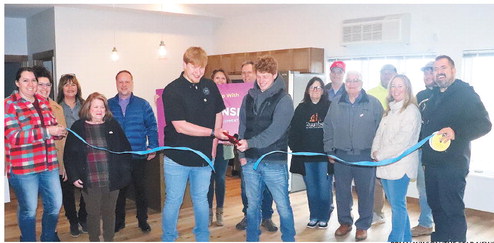Do your part to improve Wisconsin’s air quality


The average adult breathes about 20,000 times each day, and the quality of the air that’s breathed is influenced by decisions about how each individual works, travels, plays and maintains their homes.
Making a few lifestyle choices may seem small, but even minor changes to energy use, consumption and waste habits can add up, and positively impact air quality.
And, as May unfolds, so does Clean Air Month, an annual reminder of the importance of breathable, pollutionfree air, for health and the environment. However, most recently, many states are grappling with a pressing issue: Canadian wildfires causing smoke and air quality issues.
With over 146 active wildfires burning in Canada, wildfire smoke has drifted across the border into the United States, prompting many state officials to issue air quality alerts.
One of the most alarming repercussions of wildfires, is the deterioration of air quality, because of the release of harmful pollutants, such as particulate matter (PM), carbon monoxide (CO), nitrogen oxides (NOx) and volatile organic compounds (VOCs).
These pollutants can penetrate deep into the respiratory system, causing or exacerbating various health problems, including respiratory illnesses, cardiovascular diseases, particularly among vulnerable populations such as children, the elderly and individuals with pre-existing health conditions.
Ways to improve the state’s air quality include the following: • When possible, ditch the car and use feet. Replacing even one trip to the coffee shop a week, with a walk or bike ride, can help reduce vehicle emissions – the state’s largest source of ozone-forming pollutants.
• Keep lawnmower blades sharp and don’t burn lawn clippings, yard waste or trash. Compost or recycle instead, to reduce air pollution.
• Grill without a guilty conscience using an electric grill, sustainably harvested charcoal or a charcoal chimney, instead of lighter fluid, which can cause the release of carbon monoxide, particulate matter and soot.
• Eliminate bad air from inside the home, by keeping it mold-free, cleaning often to avoid dust mites, using cleaning products with lower amounts of volatile organic compounds (VOCs), ensuring fuel-burning appliances are vented properly, testing the home for radon, not smoking, avoiding secondhand smoke and opening windows to bring in fresh air, when outdoor air quality is safe.
Another ongoing clean air initiative, is the conversion to LED lighting, which uses less energy than traditional lighting, while also requiring fewer lights to achieve the same level of brightness. Less energy use translates to fewer greenhouse gas emissions.





